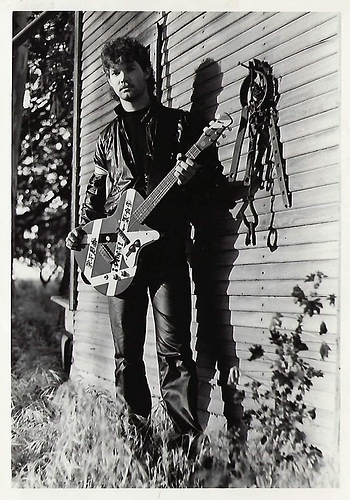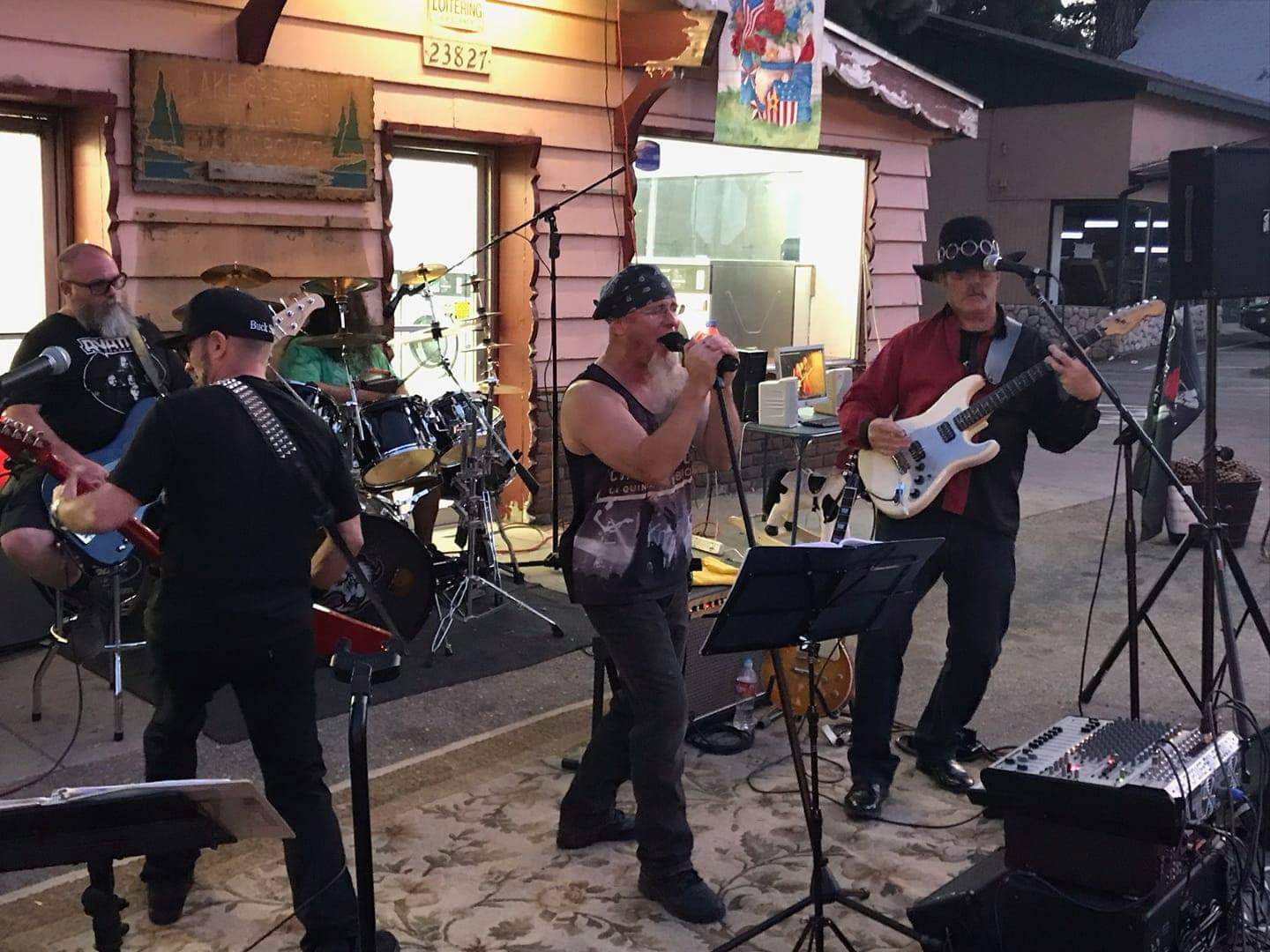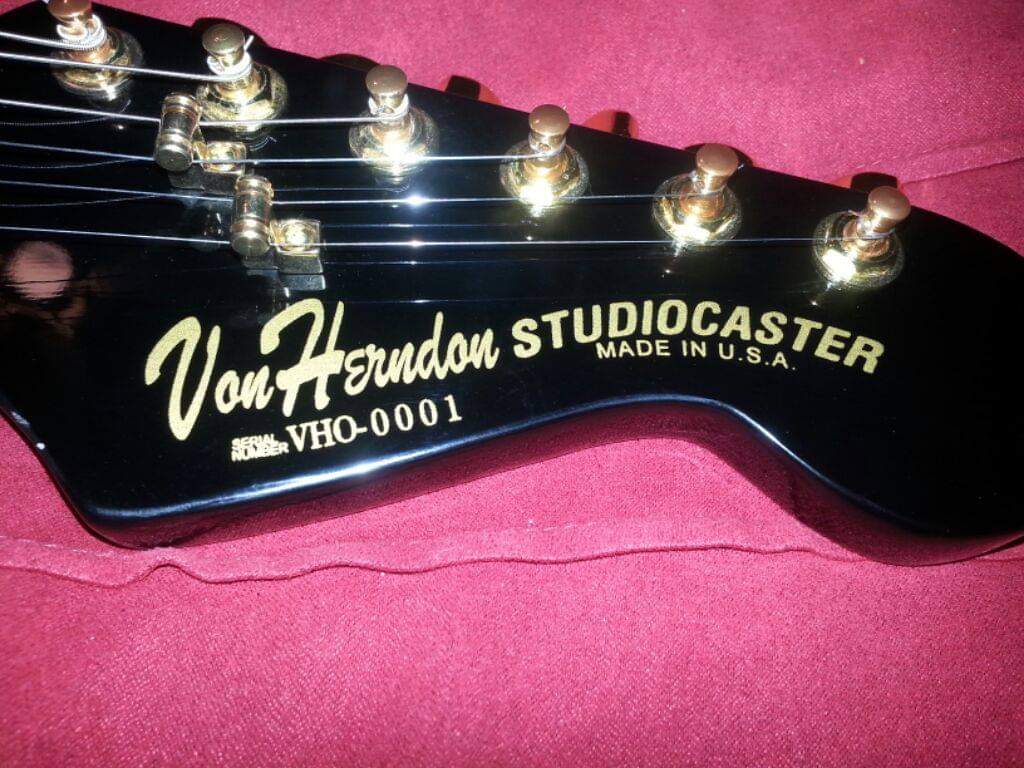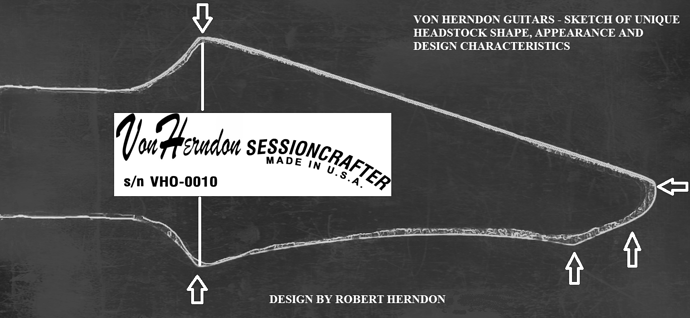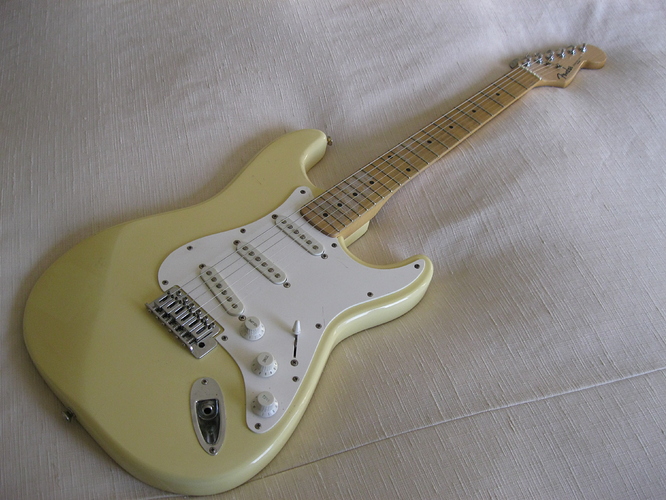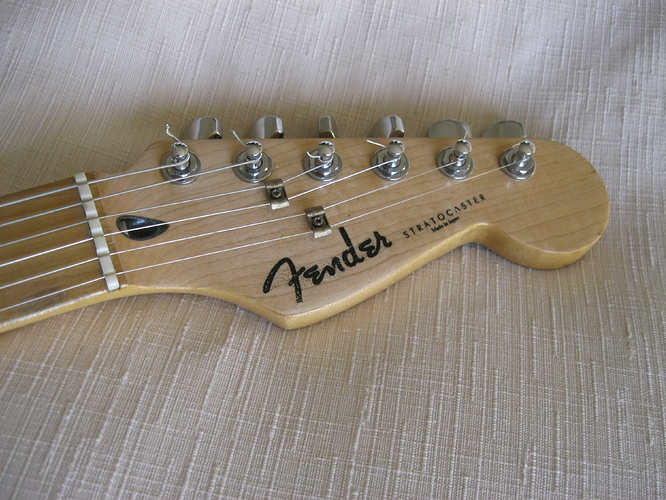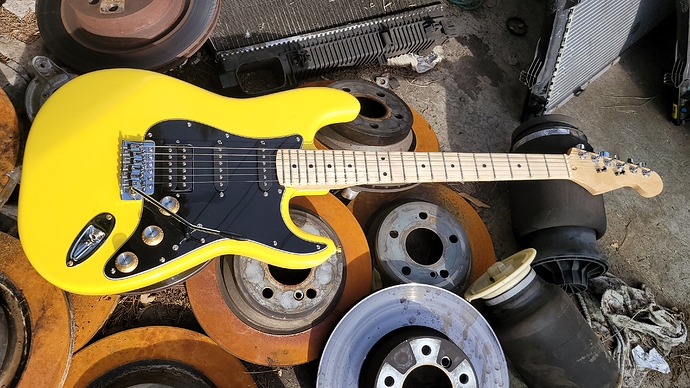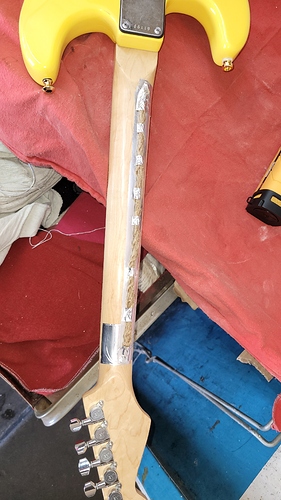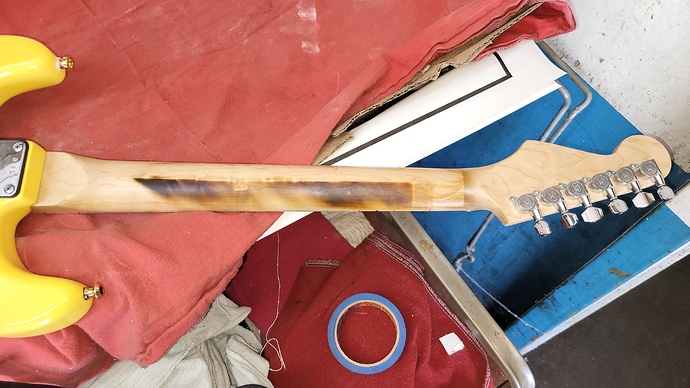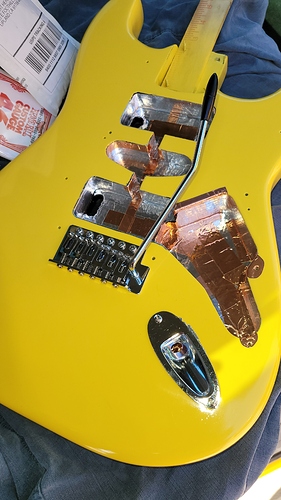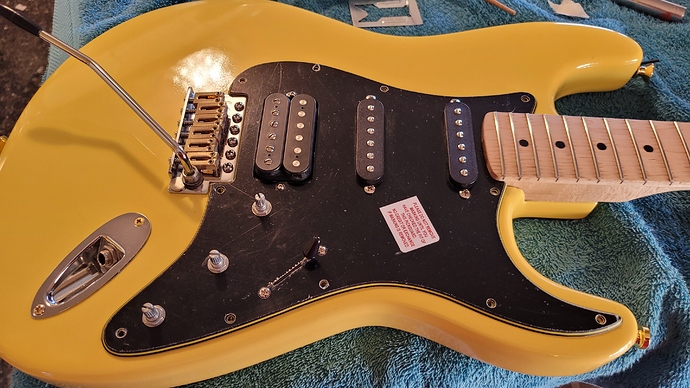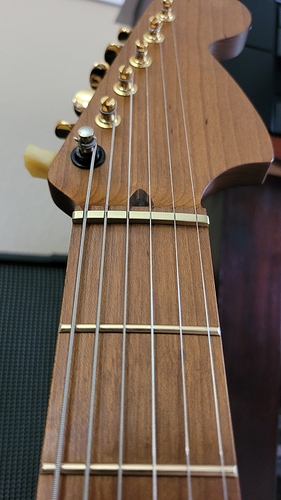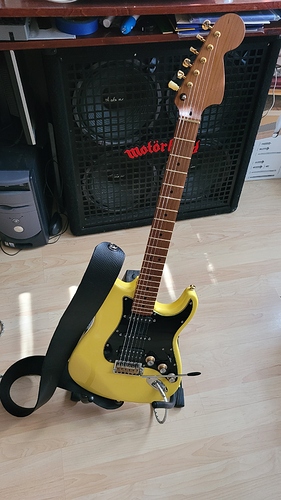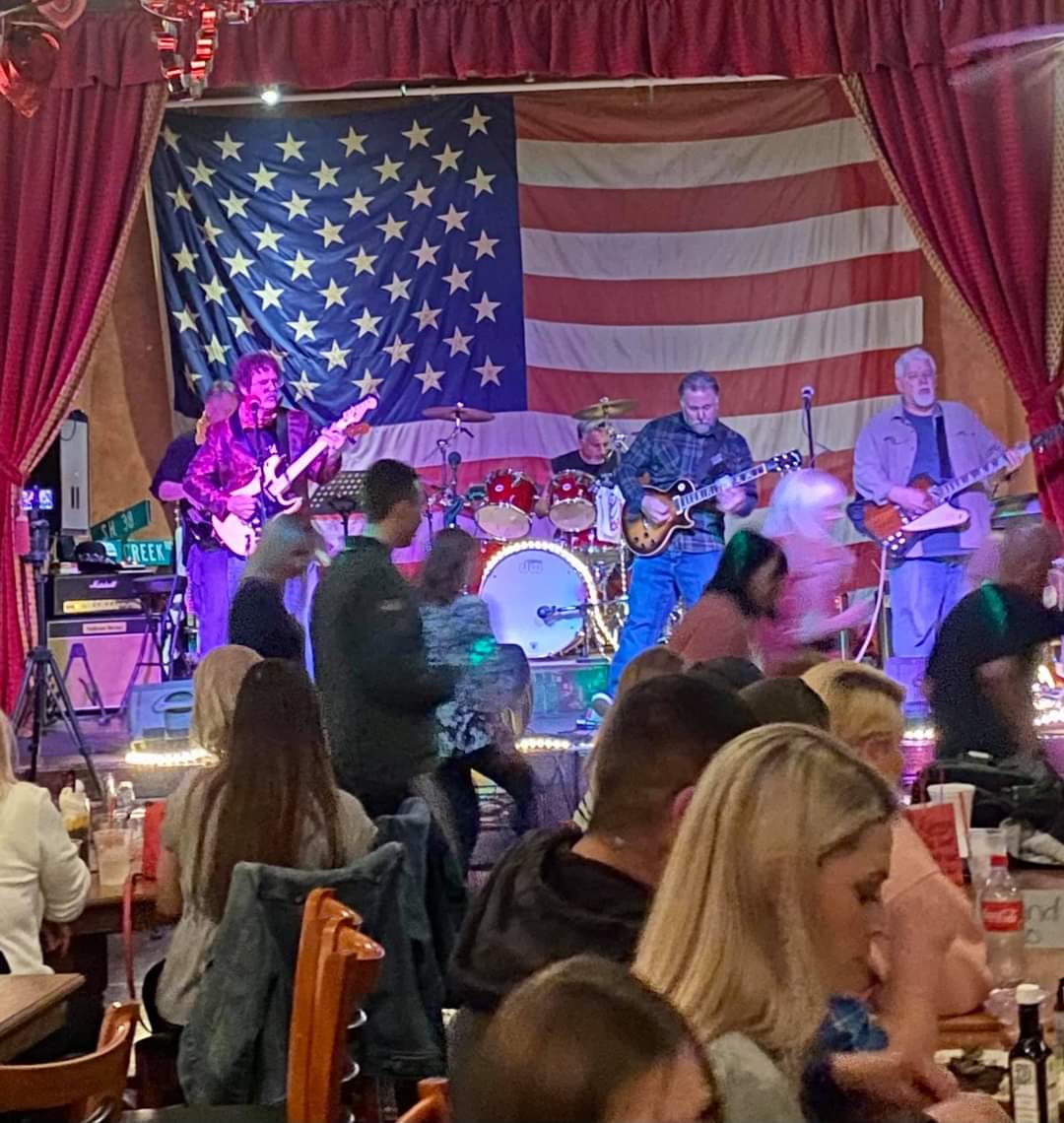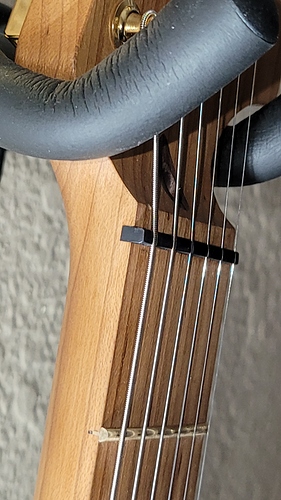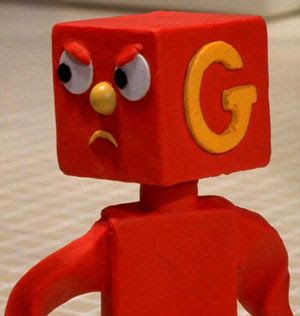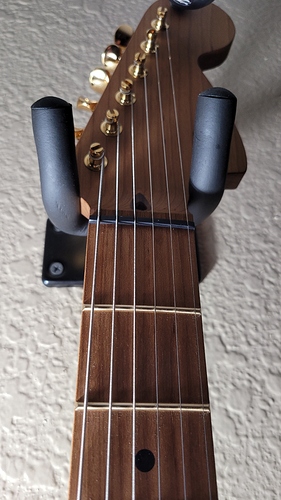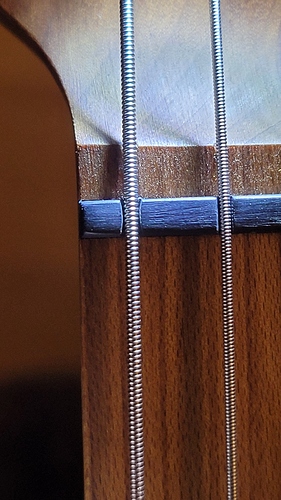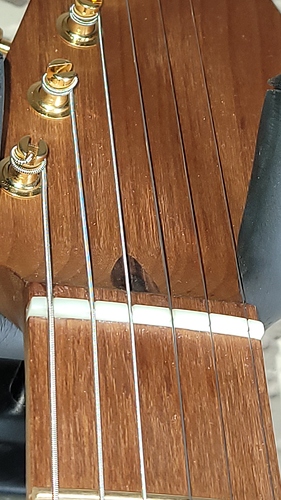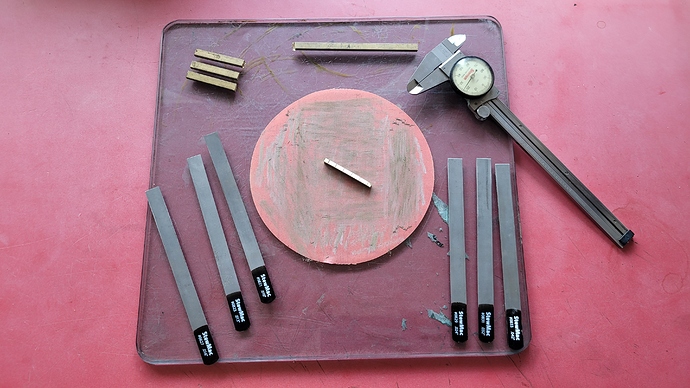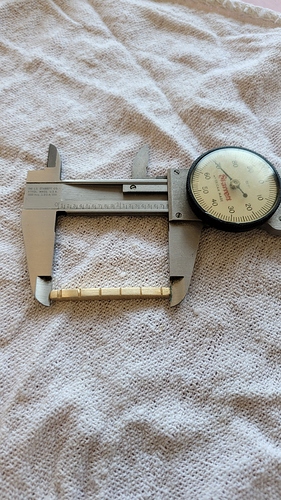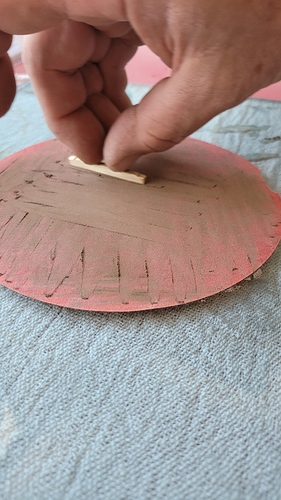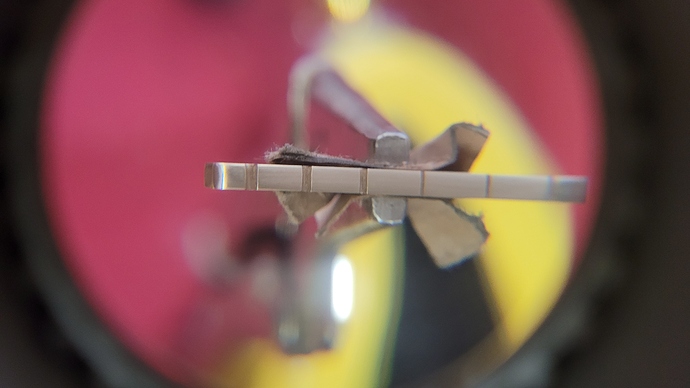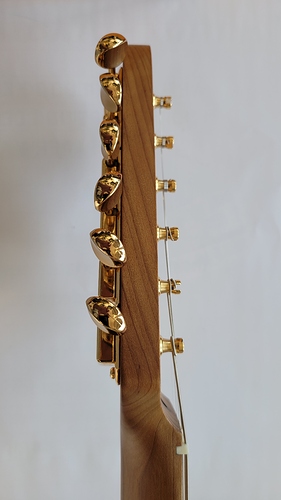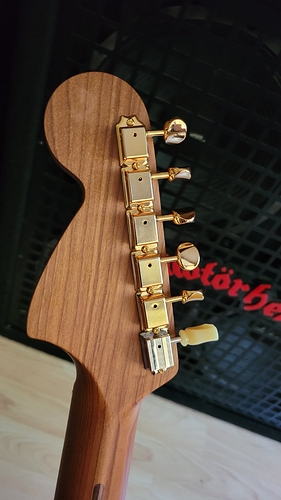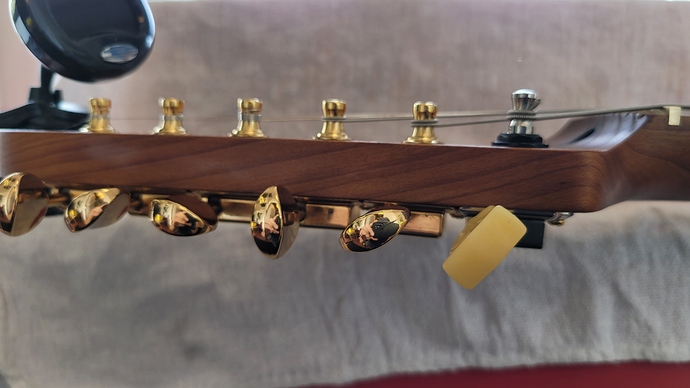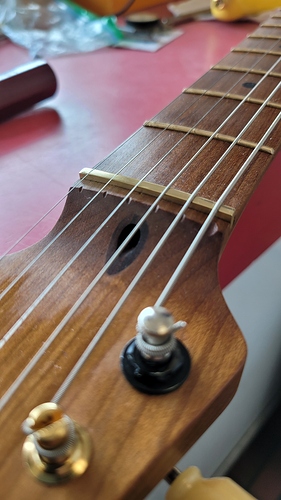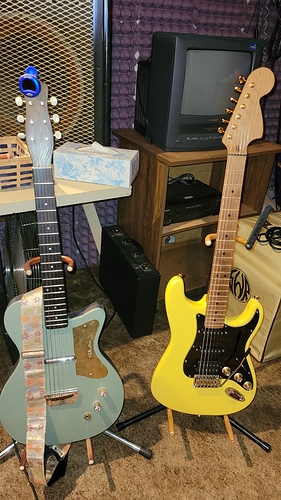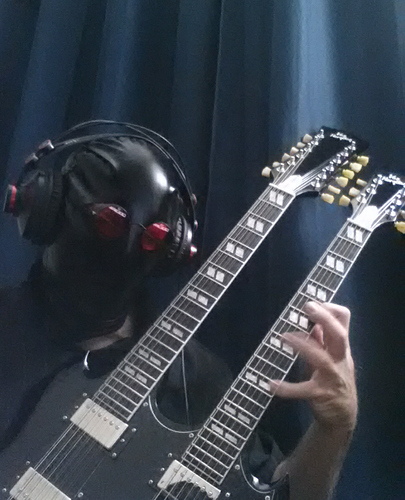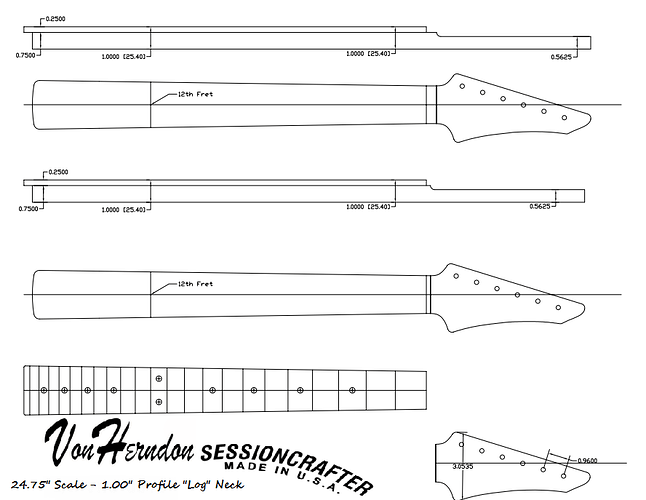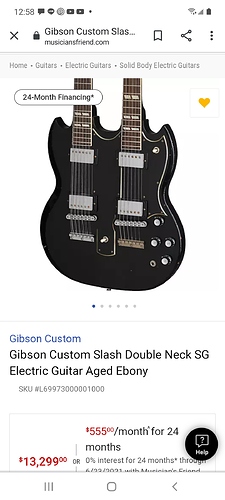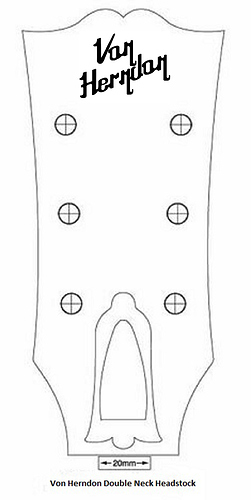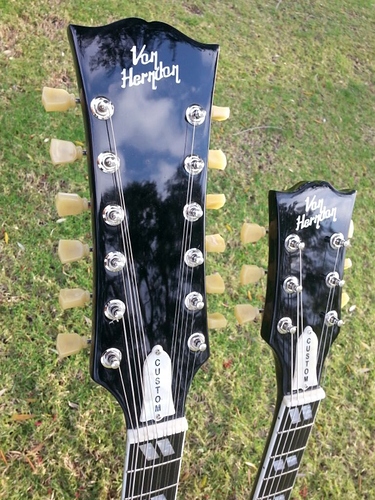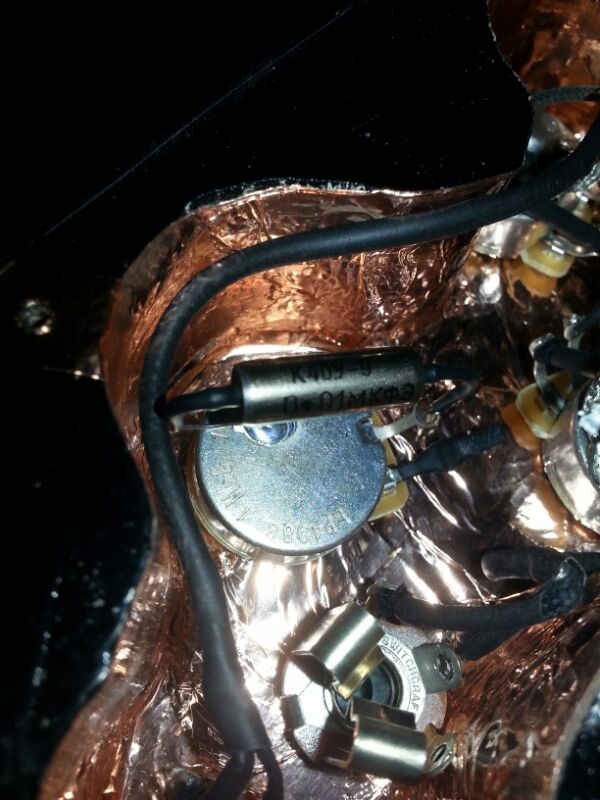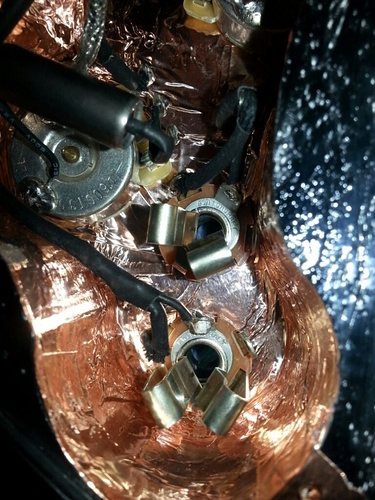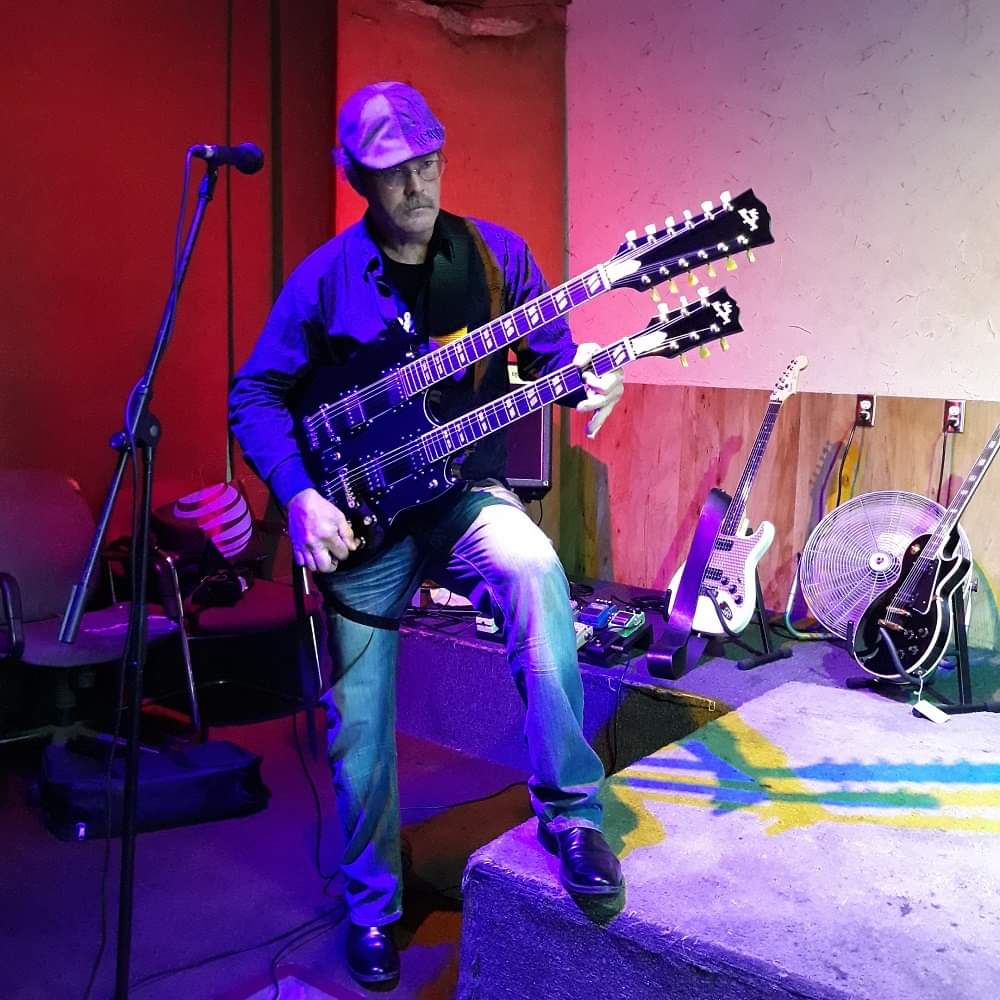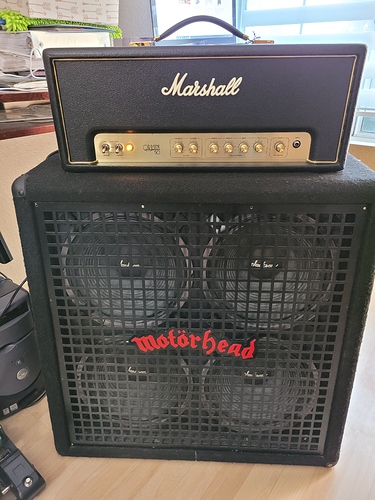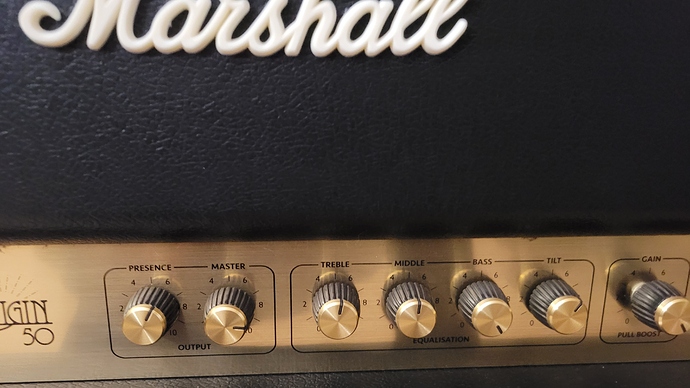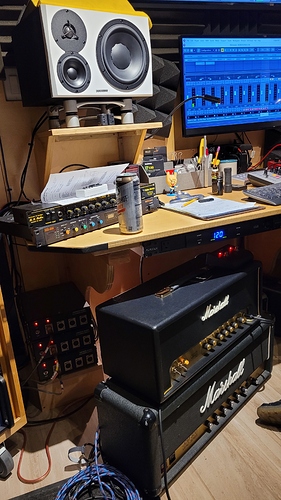Around 1980, i started out on an 18 fret, 1959 Sears Silvertone that my parents gave to me. I painted it a wild, two-tone green striped color scheme and hand painted some characters on it that I got off a Chinese menu. I stuffed a Duncan Quarter Pounder in it and saved up for a used JTM30 combo. I bought a piece of leather from a local boot shop and made my own strap. This was my main guitar/amp from 1980 until 1983. At that time, I was playing 5 nights a week in a bar band earning $125/week.
In late 1982, I bought a pre-release Ibanez Destroyer DT555 and that served as my #1 guitar, until it was stolen one night from my car parked outside The Rainbow in 1988.
I played a few different guitars over the years, but the longest run I had was with a 1987 MIK Squire Stratocaster that bandmates chipped in and bought for me in 1988. I played that guitar for 28 years.
In 2019, a friend of mine offered me a brand new Schecter Hellraiser C1FR in trade for it and the Squirecaster now lives in a private collection.
I built a few guitars over the years, from parts I bought from the now defunct B.Hefner & Company in Whittier, California. I even built a few custom, Gibson scale Stratocasters and Telecasters under my stagename ‘Von Herndon.’
I even designed and trademarked my own headstock design.
However, probably my favorite guitar was one that I pieced together quite by accident.
Here’s the backstory…
Last year, I was contracted to come up with a guitar that could be played in a music video while on fire. A music colleague had a 1982 Fender MIJ Standard Stratocaster that he sanded down and rejected because the body was made from plies of alder.
Here’s a couple of pics of the 1982 MIJ Standard Stratocaster before he sanded it down:
And how it looked when I received it:
He gave me the body and I quickly primed it and painted it spray can yellow with spray can clear. I threw an old neck on it that I had on my workbench and enough hardware to make it playable.
I taped a wick to the back of the neck with copper tape and soaked the wick with tiki torch fluid. The video was filmed and the guitar just hung on my wall after that.
One day, I just picked it up and started playing around on it. There was something about this guitar - something positive and mysterious - that captivated me. At this point, I decided to turn it into a working guitar.
I started by performing a full copper shielding job on it.
I had Chandler Music in Chico, California build me a custom HSS pickguard in black/yellow/black. I had DiMarzio build me a custom humbucker we called “The Neanderthal,” which is 44AWG, 16.5k AlNico9. I paired this with two Artec, bar magnet, screw pole piece single coils and a custom harness with bridge tone control and 5 way switching.
I built my own brass saddles and brass sustain block at a friend’s shop using his equipment:
Since I have huge hands and most guitar necks feel uncomfortable and cramped, I ordered a custom 1-3/4" roasted maple neck from Warmoth with a thick, 1.00" deep ‘V’ profile.
I eventually made my own nut from brass and swapped in a modified Gibson tuner on the low ‘E’ to improve string angle. All other tuners are short post vintage and no string trees are needed.
This guitar is just phenomenal to play. You can divebomb 11 semitones and it comes back to perfect pitch every time. It’s become my main stage guitar.
Here is a picture of it this morning with the strap that I made in 1980, shown in the first B&W photo I posted above. The Jackson 4x12 cabinet was a gift from Wurzel.
And a photo from a performance last month posing with one of my Les Paul Replicas I built in my garage:
Thought you folks might find this story musically interesting.
Here’s wishing you prosperity and success…

